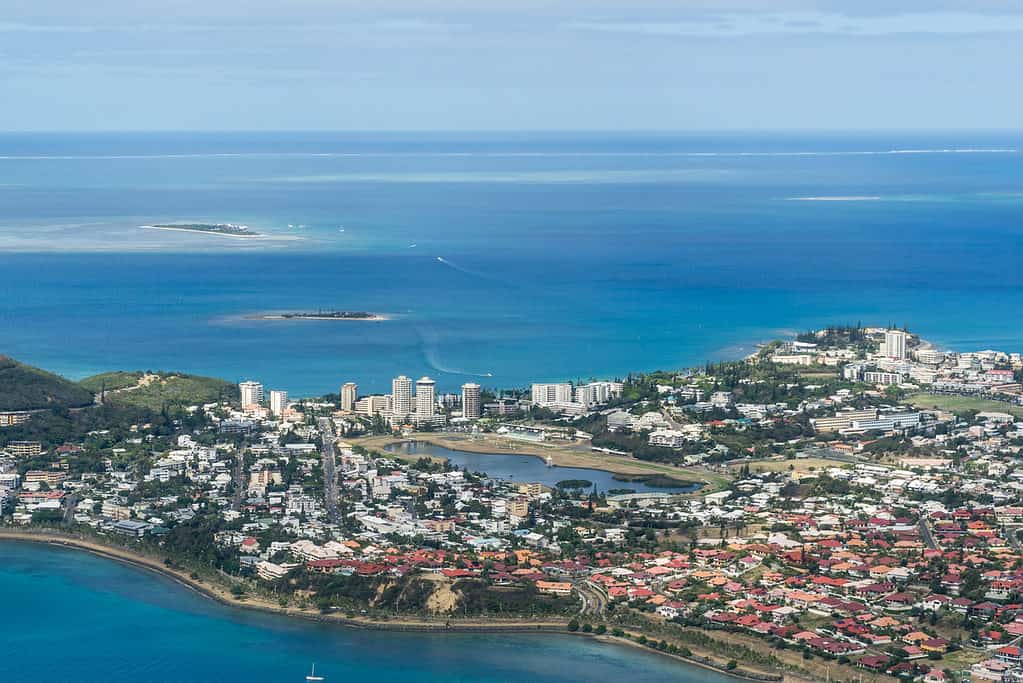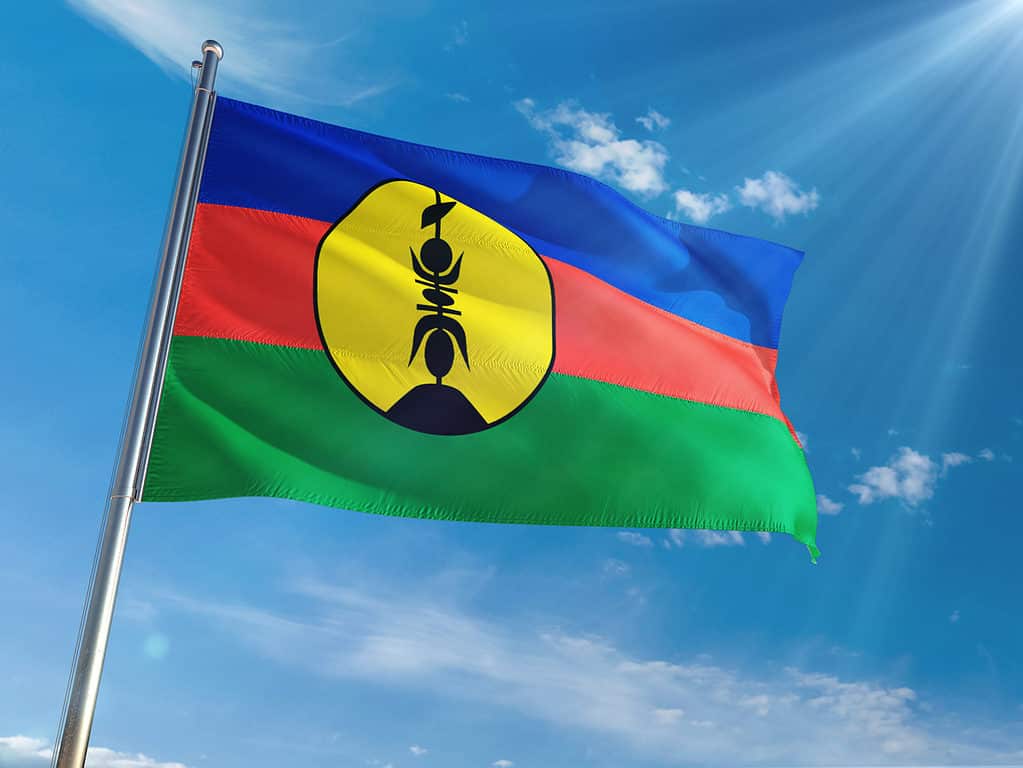New Caledonia is an island nation located in the Southwestern Pacific Ocean, approximately 900 miles east of Australia. The Solomon Islands and Vanuatu are two of New Caledonia’s closest neighbors.
Unknown to many, New Caledonia isn’t recognized as an independent country but exists as an overseas territory belonging to France, along with French Polynesia and Wallis and Futuna. Despite falling under the French, present-day New Caledonia is mostly autonomous.
The population is divided into French settlers, Europeans, and native Kanaks. Small numbers of Wallisian, Futunian, Indonesian, and other unspecified nationalities are also dotted across the islands. The Kanaks, descendants of the Melanesian people, were among the first to occupy New Caledonia. Their history with the New Caledonia islands goes back several millennia.
Although French is the official language of New Caledonia, there are 28 other distinct languages spoken other than French. This number includes native dialects and creole, which are common in society and taught in schools.
Until recently (in 2010), New Caledonia used one flag to represent the whole nation. This changed when the Kanak flag of independence joined the French Tricolor flag. Learn about the history, meaning, and symbolism of the flags of New Caledonia in this article.
History of New Caledonia

Although French is the official language of New Caledonia, there are 28 other distinct languages spoken in the nation.
©iStock.com/Mathilde Receveur
Until the land was “discovered” by British navigator James Cook in 1774, the Melanesians had little outside contact for thousands of years.
James Cook, or Captain Cook, regarded as one of the greatest explorers of all time, set off the race for British colonization of the Pacific. Cook gave New Caledonia its name. Its familiar mountainous terrain reminded him of the highlands of Scotland.
Although deemed a British hero, Cook treated indigenous people brutally because they refused his “gift” to become civilized.
France also set their sights on the region shortly after its alleged discovery. They annexed New Caledonia in 1853, aiming to turn it into a penal colony. Set up as a penitentiary establishment, the French sent their prisoners here. They were utilized as free labor for the duration of their sentence.
The following years meant massive displacement for the local Melanesians, who were stripped of their land to make space for European settlers, and forced onto small reserves. These reserves, constituting only 10% of the total land, were remote with nutrient-poor soil.
In response to having their best fertile land seized, the Kanaks revolted in surprise, undeniably violent attacks against the French, who brutally retaliated. The repressive le code de l’indigénat (native law) was passed to prevent the Kanaks’ future uprisings against the regime.
Why Hasn’t New Caledonia Achieved Independence Yet?
Treated like second-class citizens, the Kanaks suffered greatly under colonial rule. The oppressive native laws subjugating them were finally abolished in the post second world war era. However, it wasn’t until 1957, a year after New Caledonia stopped being a colony, that all New Caledonians were given universal suffrage.
As fully recognized citizens, the Kanaks pushed hard for the independence of New Caledonia or Kanaky. However, this wasn’t a shared desire by everyone. It still isn’t. The Kanaks, making up 41 percent of the population, are a democratic minority.
The remainder of New Caledonians are either descendants of the largest French migrant community or identify as Wallisians and Futunians. Most oppose independence because they want to remain part of France. These beliefs, sentiments, and politics continue to shape modern-day New Caledonia. Citizens are either for or against creating a fully independent New Caledonia.
Sporadic conflict over the issue of independence was common from 1969 onwards. Heightened levels of antagonism reached a deadly climax in 1988 when French troops killed 19 Kanak activists to end a hostage situation. Following these events, an agreement called the Matignon Accords was signed. It aimed to bring peace and start the emancipation process for New Caledonia.
The 10-year-long accord was eventually superseded by the Noumea Accord. The Noumea Accord is a twenty-year transitional plan for New Caledonia, which doesn’t necessarily guarantee independence. Still, it promised increased political power and righting past wrongs. So far, three voting referendums in the agreement have failed to bring independence to Caledonia.
Why Does New Caledonia Have Two Flags?

The French tricolor flag was first flown in New Caledonia in 1864.
©iStock.com/Olivier DJIANN
First flown in New Caledonia in 1864, the French flag is still used today to represent the territory but was joined by the Kanak flag in 2010. This was a move by the Congress of New Caledonia, which voted to have two flags. So far, it has proven controversial and divisive.
Those in anti-independence camps believe the Kanak flag doesn’t represent modern New Caledonia, instead standing for independence they don’t want or believe in, and choose not to fly it next to the Tricolore flag.
Others are advocating for a brand-new flag that incorporates designs from both flags instead of flying two that spur divisions. Hopes for this new flag would be to unite all New Caledonians and promote a common destiny for ethnic Kanaks and French.
History, Description, and Symbolism of the Flags of New Caledonia

The Kanak flag was adopted in 2010 as an official flag of New Caledonia.
©iStock.com/sezer ozger
In their mission to achieve independence, pro-independence groupings created the Kanak Socialist National Liberation Front (KSNLF). The party adopted the Kanak Flag in 1980 and used it unofficially before it was declared an official flag of New Caledonia in 2010.
The flag is a horizontal triband consisting of blue, red, and green. Leaning slightly to the left of the flag is a yellow disc outlined in black with the Kanak-carved totem inscribed on it. From top to bottom, the horizontal fields stand for the sky and ocean surrounding New Caledonia (blue), bloodshed in their struggle for independence (red), and land and the ancestors buried on it (green). The yellow disc is the sun and the totem, or flèche faitière, a decorative symbol adorning many traditional Kanak rooftops.
The other official flag used in New Caledonia is the French flag, an emblem of the fifth republic. The French flag, known as the French Tricolore, has three vertical colored bands of blue (on the hoist side), white, and red. White represents the monarchy, while blue and red represent the colors of the city of Paris.
Unlike the Kanak flag created in recent history, the tricolor spans centuries, with its origins tied to the French revolution of 1789.
Up Next:
- The Flag Of France: History, Meaning And Symbolism
- The Flag of Cuba: History, Meaning, and Symbolism
- The Flag Of the Netherlands: History, Meaning And Symbolism
The photo featured at the top of this post is © iStock.com/gt29
Thank you for reading! Have some feedback for us? Contact the AZ Animals editorial team.







